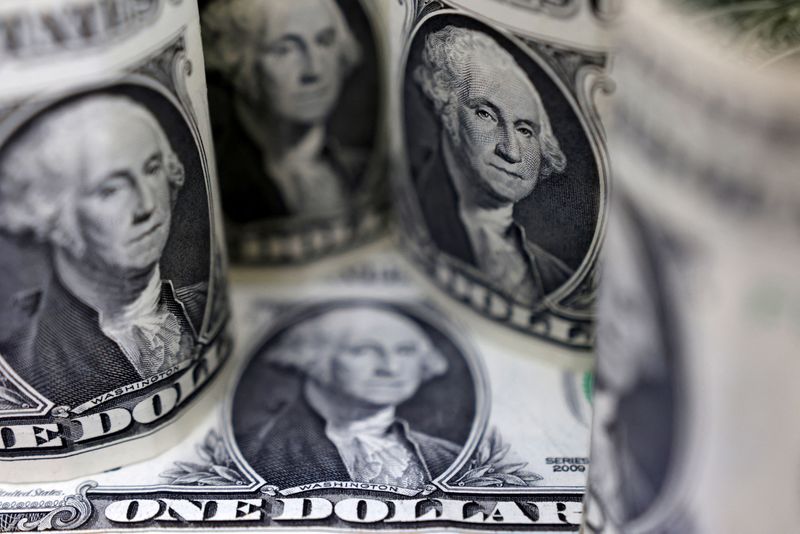
By Brigid Riley
TOKYO (Reuters) -The dollar drifted sideways on Wednesday, giving some relief to the yen and other major currencies after a sharp rally to a seven-week high last week, as investors paused to assess the interest rate outlook for the United States.
The New Zealand dollar slumped to its lowest since Aug. 19 at $0.60705, after the Reserve Bank of New Zealand (RBNZ) cut interest rates by 50 basis points and left the door open to yet more aggressive monetary easing.
The sparse U.S. data calendar this week provides a pause after the strong jobs report last Friday sent the dollar rallying and had markets tempering the expected scale of upcoming interest rate reductions.
Later on Wednesday, investors will get minutes of the Federal Reserve’s September meeting, which will show discussions about what at the time had appeared to be a deteriorating labour market that ended with all but one policymaker agreeing to a 50-basis point cut.
But the robust nonfarm payroll data has seen markets reprice near-term Fed rate cut expectations. Investors now have about an 85% chance of a quarter basis point reduction priced in, as well as a slim probability the Fed will leave rates unchanged, the CME FedWatch tool showed.
The U.S. September Consumer Price Index report on Thursday will the main piece of data this week.
“U.S. inflation data this week and upcoming corporate earnings will be key to sustaining the U.S. dollar rebound and will need to reinforce the US exceptionalism narrative,” analysts at Westpac IQ wrote in a note.
The dollar index, which measures the greenback against a basket of currencies, edged up 0.11% to 102.6, not far from Friday’s seven-week high of 102.69.
The euro was down 0.07% at $1.0973, while the pound was mostly flat at $1.3099, close to the more than three-week low of $1.30595 it touched on Monday.
Dollar/yen ticked up 0.19% to 148.475 yen, after touching a seven-week high of 149.10 on Monday.
“Markets will not be keen to pile into JPY shorts ahead of election uncertainty for both the U.S. and Japan,” said Wei Liang Chang, a currency strategist at DBS.
The yen has been whiplashed since Japan’s new Prime Minister Shigeru Ishiba, known for being a critic of easy monetary policy, surprised markets with recent remarks that the nation is not ready for further rate hikes.
Ishiba has set a snap election for Oct. 27, ahead of the Bank of Japan’s October monetary policy meeting and the U.S. presidential election next month.
Verbal warnings about rapid currency moves issued by Japanese authorities earlier this week should “further restrain” dollar/yen from rising to the 150 range, Chang said.
Elsewhere, the kiwi was last down 0.5% at $0.61055 as investors assessed the RBNZ’s policy decision and its clear dovish signal suggesting many more rate reductions were on the cards in coming months. A majority of economists in a Reuters poll had predicted Wednesday’s 50 bps cut.
The Australian dollar perked up on news that China’s finance ministry is scheduled to hold a news conference on fiscal policy on Saturday, after the currency earlier slid back toward Tuesday’s three-week low of $0.6715. It last traded down 0.31% at $0.6726.
Investors remain focused on China after a volatile day in Chinese and Hong Kong markets in the previous session.

Beijing said on Tuesday it was “fully confident” of achieving its full-year growth target but refrained from introducing stronger fiscal steps, disappointing investors who had banked on more stimulus from policymakers to get the economy back on track.
The offshore yuan fell 0.28% to 7.0550 per dollar.
This post is originally published on INVESTING.


